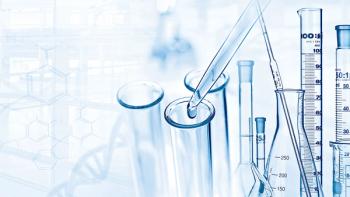
- Pharmaceutical Technology-12-02-2012
- Volume 36
- Issue 12
A Lifecycle Approach to Optimizing Cleaning Systems
Clean-in-place systems should be optimized during design and commissioning and after validation.
In the 1990s, pharmaceutical manufacturing facilities started to adopt clean-in-place (CIP) technologies to improve cleaning processes and increase critical equipment uptime. While these early systems provided significant benefits over manual cleaning, they were assembled before more modern guidance on construction and optimization. Their designs have subsequently been propagated to other production facilities without significant re-evaluation. As such, cleaning cycles are often an afterthought during current process design and development efforts, resulting in cycles that are poorly conceived, painstakingly long, or unnecessarily wasteful.
(GLOWIMAGES/GETTY IMAGES)
Focusing on the cleaning-system design throughout the lifecycle can yield significant cost and time savings for an organization. At the onset of a project, the equipment and piping should be reviewed for sanitary design to facilitate CIP methodology. After the design and build, cleaning cycles should be properly commissioned via testing and analysis. Often, the cleaning systems and cycles are qualified and validated as delivered, thus imposing change control barriers to conducting cleaning cycle optimization. Although the modification of cleaning cycles after validation is more complex, there is a pathway to measured and controlled improvements through mechanical design or automation development. This pathway requires balancing the benefits and desired outcomes of the optimization with the costs and available resources for design and implementation. The following is a brief look at techniques to optimize cleaning cycles throughout the equipment's lifecycle.
Equipment design
An efficient cleaning cycle begins with equipment designed to ensure successful cleaning. Tank and piping design should be reviewed for sanitary cleanability, as described in section SD-3.1 of the American Society of Mechancial Engineers Bioprocessing Equipment standard (1). This design may include minimizing deadlegs; verifying pipes are sloped toward a drain; checking for low-point drains, sanitary connections, and valves; and verifying that all product-contact surfaces are accessible to cleaning solutions.
Figure 1: An example of flow-path design.
The next step in the cleanability review is to create a preliminary design of flow paths for CIP circuits. An example is shown in Figure 1. Segments of equipment and piping should be properly separated and/or combined into different cleaning circuits as part of a preliminary design. Important considerations include process and schedule requirements, potential residues, and piping design.
Process and schedule. Knowledge of the equipment's use can provide insight on process hold or transfer times. Transfer lines and tanks may need to be chained together into a single CIP circuit for quick equipment turnaround to meet these demands. Clean and dirty hold times may also affect equipment scheduling and the cleaning requirements.
Residues. Characterizing residues through cleaning studies and identifying associated product-contact surfaces aid in parameter development. Certain residues may require different cleaning solutions, concentrations, and temperatures for suitable cleaning to occur. This analysis can help organize circuits by common cleaning parameters.
Piping design. Available transfer panel connections may limit the combination of certain transfer lines and tanks. The user should account for line sizes and lengths as major pressure drops may decrease flow and turbulence within the pipe. Additional pumps and other spool pieces may be required within the system. Caution should be exercised in these cases to minimize manual configuration steps and reduce the risk of setup errors. Finally, the user should consider the availability of low-point gravity drains throughout the CIP circuit. Gravity drains remain crucial for efficient CIP cycles.
Automation-system design
The cleaning automation design also should be reviewed for efficient cleaning characteristics. Developing cycles and sequences that complement a particular automation control system greatly reduces long-term operating costs. For instance, a fast response, direct-action, process-logic controller (PLC) may minimize rinse times and water consumption by toggling through every auxiliary path on a complex bioreactor quickly enough in parallel with the sprayballs while not extending sprayball coverage test durations. In contrast, the path transition time within a distributed-control system (DCS) depends on its programming style and may require several layers of equipment module (EM) and sub-EM commands before finally reaching the target control modules (CMs). Only after waiting for valve and state confirmations can the next step begin. Here, creating a cycle that combines multiple transitions into a single grouping will result in the shortest and most cost-efficient cycle possible. Combining cleaning actions (e.g., rinse, drain, and air blow) within phases also reduces the cycle duration. In contrast, a strategy of using more modular, individual phases may elongate the cycle.
Various time and cost-reducing methods must be balanced with skid equipment capability. For example, one may be able to take advantage of integrated PLC capabilities of equipment (e.g., vendor-provided PLC-based centrifuges). These design considerations must be identified early in the project to ensure that quality and validation procedures can be developed to address the sampling, instrumentation, and verification requirements being built into the CIP and recipient systems.
For the CIP cycle itself, the automated step sequencing, step-transition criteria, and parameter values must be well-defined and documented to optimize utility usage while providing sufficient process control.
Sequence. Typically, a cleaning cycle should start with water rinses followed by detergent cleaning and postdetergent rinses. In between any rinse or detergent wash, the system should be drained completely to prevent dilution or chemical reaction with the next cycle step. An air-blow step, placed before the drain, can greatly decrease the gravity drain time and thus decrease the overall cycle time.
Transition criteria. Defining step transition criteria provides a way to control the critical cleaning-cycle parameters. For example, the chemical-wash duration, minimum temperature set point, and concentration target can all be set as requirements before the wash step transitions to the next step.
Parameter values. Laboratory-scale process residue cleaning studies can provide an excellent starting point for CIP cycle parameters. Scalable attributes, such as cleaning-agent concentration, process temperature, exposure time, and external energy, can be explored within the cleaning design space to isolate the most critical parameter(s). Combined with an evaluation of the most effective cleaning agent and identification of worst-case residues in the process, these laboratory-scale efforts can dramatically reduce the number of cycle iterations that must be performed during commissioning and allow for a focus on improving efficiency.
Commissioning
During the commissioning phase, the CIP cycle can be further optimized with hands-on development testing. Knowledge of the CIP step sequence and transition criteria are required to properly set meaningful and efficient parameters for the CIP recipes. Field verification may include monitoring drain points, viewing tank levels during recirculation, or recording pressure readings throughout the supply line.
Development testing can be aided by historical trend analysis of the test cycles. Running cycles and attempting to monitor multiple locations and parameters at the same time may be difficult with limited resources. Flow rate, pressure, temperature, conductivity, and tank-level trends, for example, can be used to optimize specific recipe parameters without having to view each instrument locally while the cycle is running. For instance, when adding chemical to a system during the recirculated wash step, the chemical must be allowed to mix evenly throughout the recirculated solution. The time required to reach the targeted steady-state conductivity can be identified by the historical trends. After comparing multiple iterations through the trends, the mixing cycle-time parameter can be set precisely based on empirical data. This method can eliminate underestimation that causes the wash recirculation to commence with nonuniform solution or overestimation that causes unnecessary cycle-time extension. These data-based decisions help maximize the efficiency of the system before validation, thus locking in cost and time gains.
Continuing optimization
After a cleaning circuit is commissioned and qualified, any changes to optimize a circuit may be difficult to implement for multiple reasons. Organizational changecontrol procedures may be burdensome, and the presented costs of a change may lead to skepticism from the control board. Whatever the restrictions or reservations, a case for cycle optimization can be made for poorly designed or inadequately commissioned cleaning circuits. More often than not, a call to optimize a cleaning circuit may lead to a long list of recommendations that can yield both time and cost savings.
When pursuing changes to a validated cleaning process, the user must understand the key cost drivers behind the optimization process. For instance, water consumption may be creating a situation in which captial investment in additional water-system capacity may be necessary. In this case, the optimization will save those additional capital costs. As another example, new products may require additional facility throughput. Reducing cycle time may be a simple way to boost overall facility throughput to achieve this goal. Often, investment of limited automation or capital resources into areas that do not directly impact the organization's key drivers will be rejected. Worse, implementing changes without understanding the cost drivers may result in beneficial improvements, but a failure to resolve the original problem. Additional time and resources will then be needed to further optimize a cleaning system that is still inefficient in the focus areas.
A thorough analysis and prioritization of potential changes can help identify an improvement path that all levels of management will endorse. Each change can be assessed with respect to its impact, ease, and necessity as well as other client constraints. Examples of items to consider are outlined below.
- Cost reduction resulting from change. What impact will the change have on the CIP utility usage, labor costs, or maintenance costs? In the end, the ability to quantify the tangible cost savings can make or break a proposed project.
- Cycle-time reduction resulting from change. How much cycle time will be saved from parameter-value reductions or changes to procedural setup times? Cycle-time reductions should be placed in context with the overall production process to highlight the impact. This can be expressed in terms of an increase in production capacity or reduction in equipment downtime.
- Ease of change. How difficult will it be to implement the change? Take into account both the technical considerations as well as the impact on the existing validation.
- Necessity of change. How necessary is the change with regard to the cleaning cycle? Changes that improve the efficacy of the cleaning process are of primary concern.
- Other constraints. Are there any site, client, or other special constraints that may hinder or restrict the change? This may include additional change record documentation, agency approvals, available resources, or field accessibility.
- Costs of the change. What are the estimated cost implications from the change with respect to shutdown, parts and labor, and validation? These costs must be weighed against the on-going benefit of the change.
Table I: Optimization analysis.
Table I shows an example of the analysis and prioritization of potential optimizations. This semiquantitative analysis allows multiple projects to be compared based on predefined criteria for each category. In this case, each category is assigned equal weight, and a higher score indicates a more desirable project. Tables II and III show a more detailed analysis of the cost- and time-reduction calculations, which were translated to the ranked values in Table I using the pre-established criteria. Estimates of labor and utility costs are inputs for the comparison.
Table II: Cost-savings analysis.
Conclusion
An optimal cleaning system requires effort throughout the product lifecycle. Both the mechanical and automation designs require thoughtful consideration. Optimal cleaning parameters should be explored in the laboratory design space, before scale-up and during commissioning. Once the process moves to the qualification phase, data trending and analysis should be used to establish recipe parameters. Finally, after commissioning and qualification, cycle changes and improvements should be controlled through analysis of cost, time, and resource benefits. By taking this comprehensive and holistic view, the user can truly maximize the capability and efficiency of their cleaning program.
Table III: Time-reduction analysis.
Andrew Wong and Cody Shrader are senior engineers at Hyde Engineering + Consulting, Boulder, CO,
Reference
1. The American Society of Mechanical Engineers, ASME BPE-2009, Bioprocessing Equipment (New York, NY, 2009).
Articles in this issue
almost 13 years ago
Pharmaceutical Technology, December 2012 Issue (PDF)almost 13 years ago
Tracking the Supply Chainalmost 13 years ago
Harmonizing Global Efforts Against Counterfeitsalmost 13 years ago
Harnessing the Power of Fingerprinting Technologiesalmost 13 years ago
Mice on a Missionalmost 13 years ago
When Disaster Strikes at Homealmost 13 years ago
Acquisitions Reshape the Bio/Pharm Services Industryalmost 13 years ago
Health Policy Challenges for Obama Administrationalmost 13 years ago
Job SecurityNewsletter
Get the essential updates shaping the future of pharma manufacturing and compliance—subscribe today to Pharmaceutical Technology and never miss a breakthrough.





